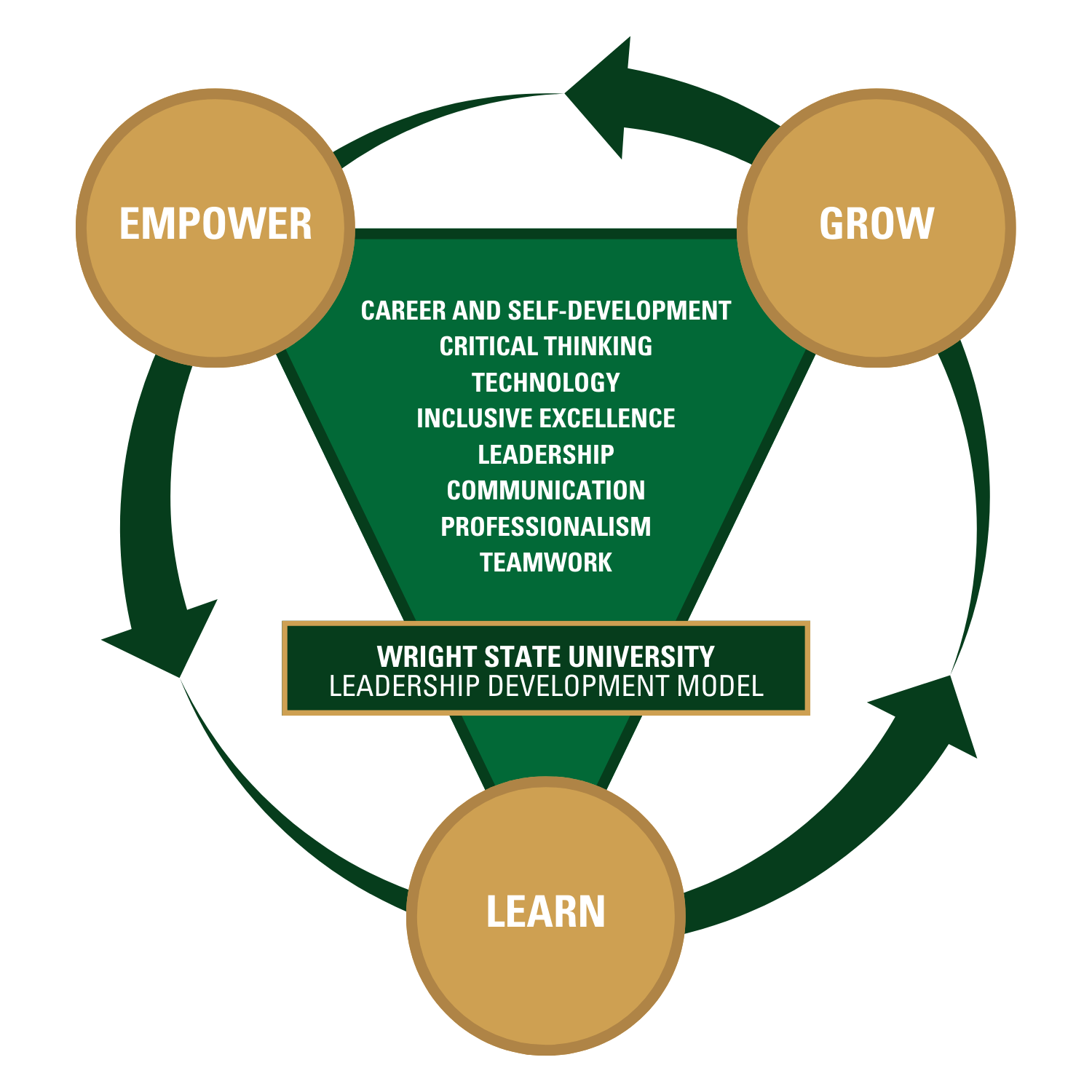Leadership Development Model


The Leadership Development Model provides a framework for addressing career-related goals and outcomes for co-curricular activities.
This model provides a road map for integrating co-curricular learning into a student's university experience. It is designed to make co-curricular learning more salient to students and, in time, help students articulate their career skill competency to potential employers. This is demonstrated through the Career Readiness Competencies.
The core outcome of the model is to recognize the critical value of career readiness skills regardless of a student's academic major or the type of future employer. The model is also designed to facilitate a higher order of learning. As the student progresses through the model, they can exhibit progressive skill development. This is demonstrated through the Leadership Domains.
The model requires students to recognize their new abilities and to demonstrate their learning to others.
Leadership Philosophy
In the Office of Student Involvement and Leadership at Wright State University, we strive to enhance leadership development by exploring one’s leadership identity through self-awareness, collaboration, and strategic planning.
Leadership Domains
As students progress through the Leadership Development Model, students progress through structured learning based on the depth of their involvement. Leadership programs are developed to foster a learning environment for a more profound development of skills. The leadership domains facilitate learning through career readiness competencies. Further, as students learn and grow their skills and achieve a certain level of mastery, they should empower others to develop a practical articulation of skills.

Learn
Students will learn to clarify personal beliefs and values while increasing their sense of belonging by participating in events, activities, and reflections.
- Awareness of the skill: The student becomes aware of the skill and their level of competency in it.
- Acquiring the skill: The student establishes a baseline for competency in the skill.
Grow
Students will grow their leadership capability by understanding group dynamics, professional relationships, diversity, and elements of effective teams.
- Applying the skill: The student puts this skill into practice.
- Advancing the skill: The student refines the skill, including teaching it to others.
Empower
Students will empower and educate others by actively engaging in community service, strategic partnerships, and innovative experiential learning.
- Articulating the skill: The student can explain the full spectrum of skill development related to this skill, including how the skills were acquired and how it has been applied and mastered.
Career Readiness Competencies
The core function of the Leadership Development Model is career readiness. Career readiness is key to ensuring successful entrance into the workforce for new college graduates. For employers, career readiness plays a vital role in sourcing talent and identifying critical skills and abilities across all job functions; similarly, career readiness offers employers a framework for developing talent through internships and other experiential education programs.

